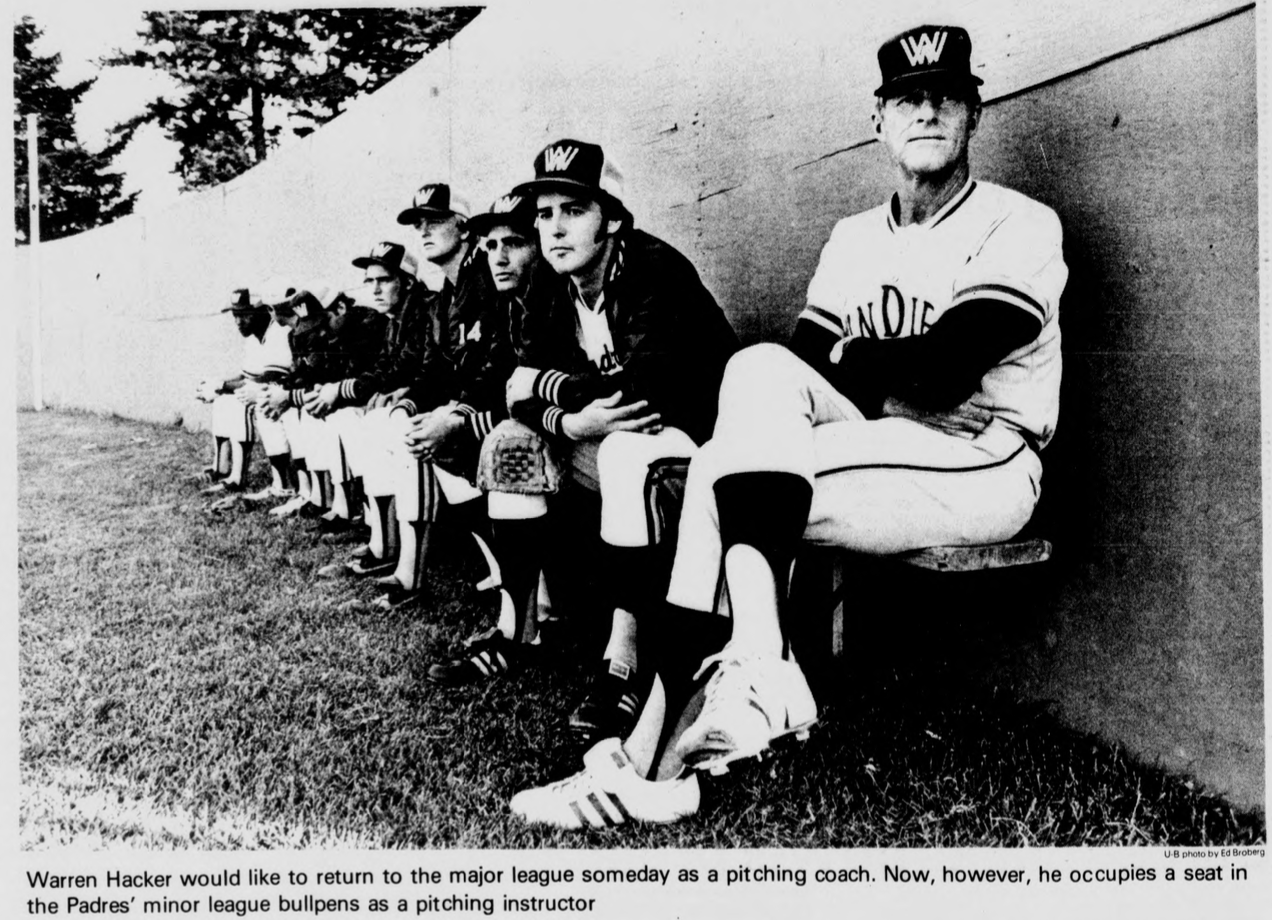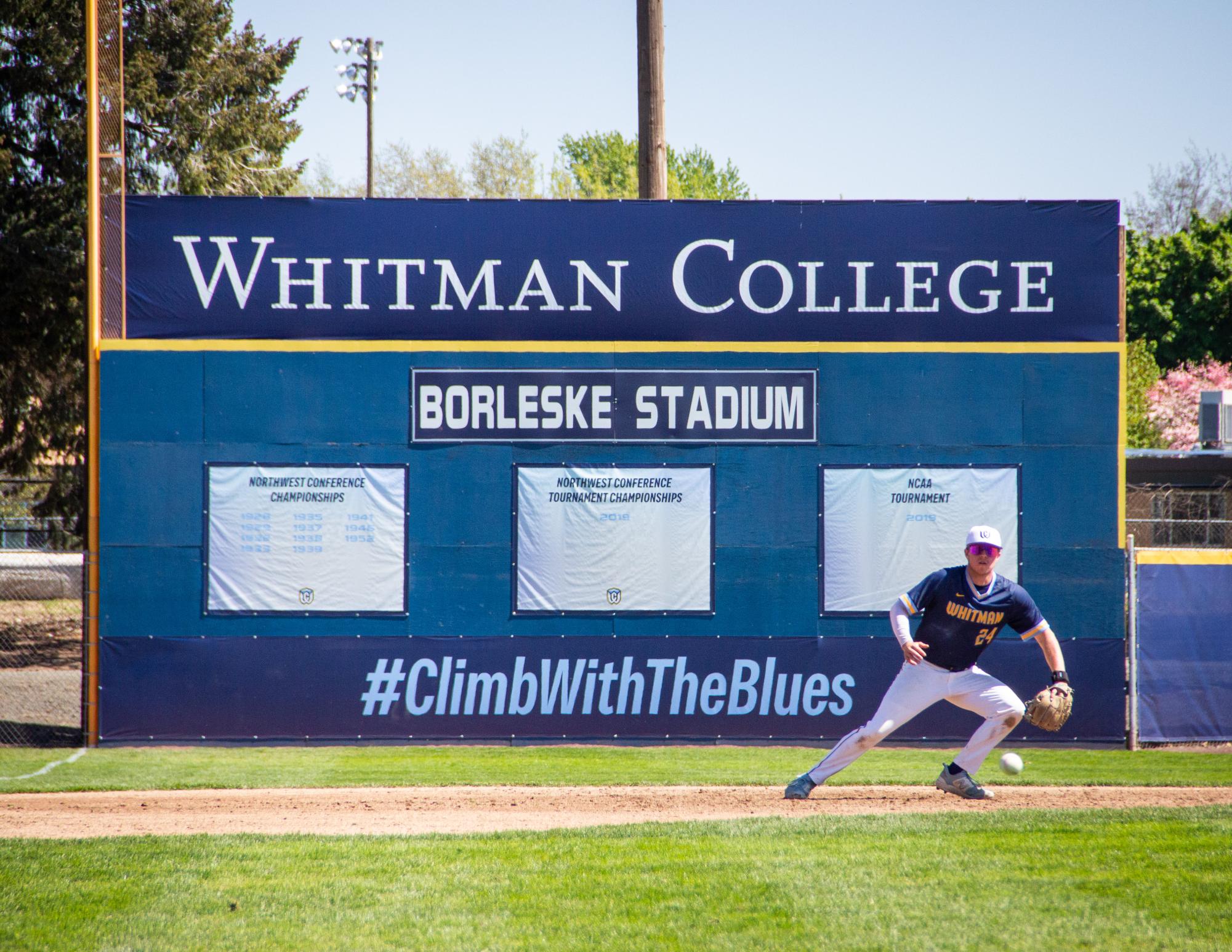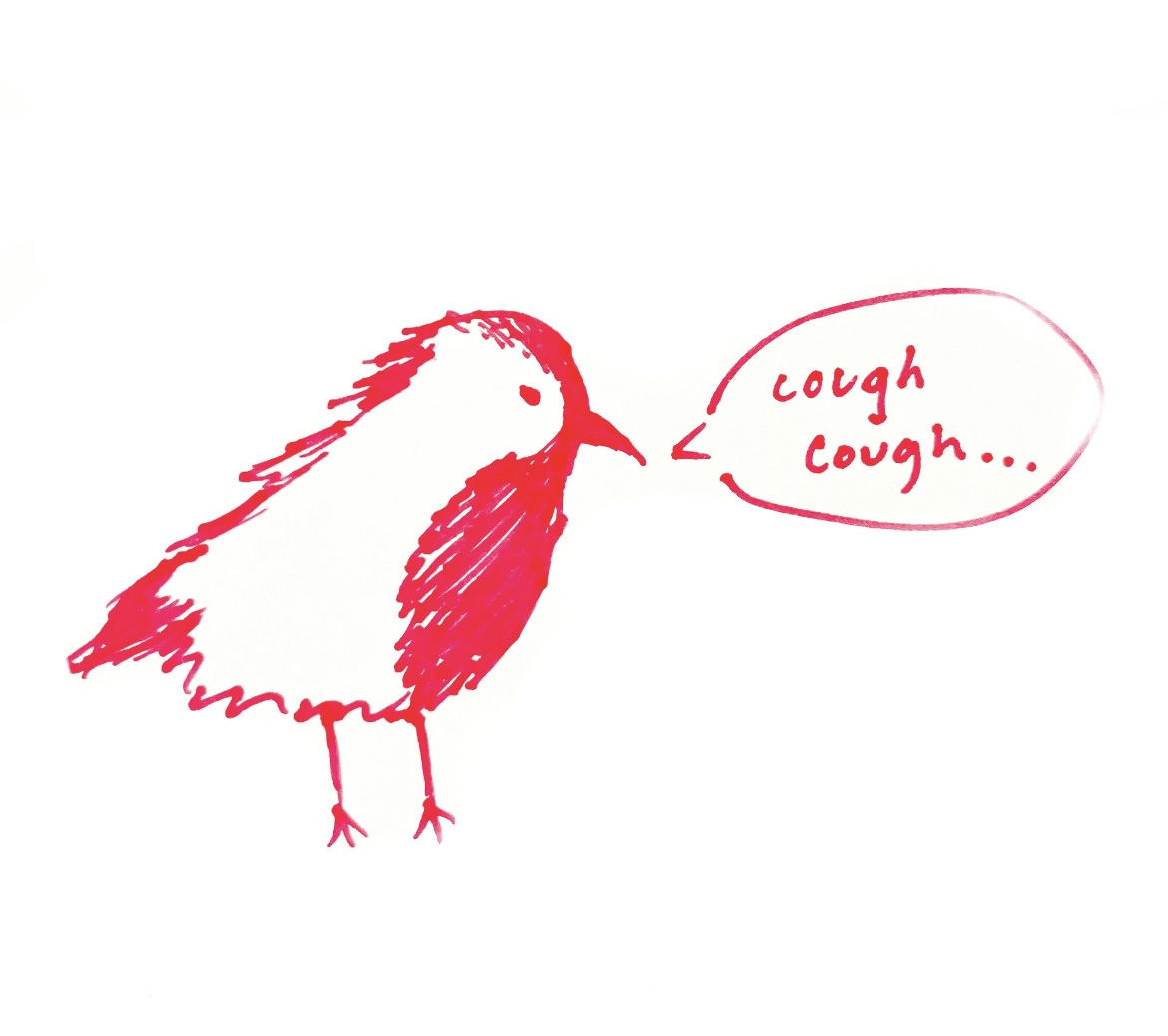Borleske Stadium is nestled on the south side of Highway 12, tucked behind Desales High School and the Veterans’ Memorial Pool. Out of sight and out of mind for many Whitman students, the 98-year-old park persists in the background of Whitman campus life, briefly flitting to the foreground when an important Whitman baseball game is played or the field is used to host a large community event like a concert.
For athletes both in Walla Walla and elsewhere, however, this field is hallowed ground. For decades, young baseball and football players have launched their careers from Borleske’s grass. The Philadelphia Phillies and San Diego Padres operated minor league baseball teams in Borleske from 1970-1982, and Walla Walla High School football games are played in Borleske Stadium in addition to the Whitman Baseball program today.
Major League Baseball Hall of Famers, MLB All-Stars and even an NFL Super Bowl champion once called Borleske Stadium their home.
Lecturer of Sports Studies and head coach of the Whitman College baseball team Brian Kitamura ’10 acknowledged the privilege the Whitman baseball team enjoys by playing home games in Borleske Stadium.
“[You have] the history of [Super Bowl Champion] Drew Bledsoe and his outstanding career [at Washington State University] and in the NFL. And then you have the baseball piece with the Phillies and the Padres, [Hall of Fame players like] Tony Gwynn starting their career here, there’s a lot of other great players who have come through the gates at Borleske,” Kitamura said. “We still share some of the stories and that history as much as we can with our players at different times throughout the year, like, ‘just remember the players who have played here before you, there’s a lot of great players who put in their time and effort on the same field that we have the opportunity to play on.’”

For Whitman baseball players, it can be a surreal experience stepping onto the same field as a baseball legend.
Recent Whitman baseball alum Benjamin Seashore-Hobson ‘23 stumbled upon an article by Corey Brock in The Athletic retelling San Diego Padres legend Tony Gwynn’s experience playing for the Walla Walla Padres 43 years ago, finding parallels between Gwynn’s experience and his own.
According to Brock, “Walla What?” was the reaction from Gwynn’s family upon his assignment to the Walla Walla Padres, the same thing that Seashore-Hobson heard almost every time he told someone where he played college ball.
“Seeing Borleske in Walla Walla [show up in The Athletic] was crazy. That’s where I play!” Seashore-Hobson said. “It’s fun to think about this dugout being the dugout that guys way way better than me have played in.”
Junior outfielder Nate Korahais patrols the same outfield once manned by Gwynn, something Korahais mentioned as a unique and special aspect of the Whitman baseball experience.
“We’ll have conversations about what it means to play on that type of field. Tony Gwynn played minor league games at Borleske, which is insanely impressive and a lot of fun. [That history] is very interesting to look at and I would consider it very unique and special for a small Division III baseball program,” Korahais said.
In addition to hosting the Whitman baseball program and Walla Walla High School football team, the semi-professional baseball team Walla Walla Sweets of the West Coast League play games in Borleske throughout the summer. The venue continues to evolve as it keeps up with community demands for hosting premiere athletic events in the Walla Walla Valley. As a result, Borleske as it sits today is a top-of-the-line facility for Division III athletics.
“Borleske is a true stadium, which can’t be said for a lot of other teams in [the Northwest Conference]. It’s built for Sweets games in the summer. Summer baseball, especially in a town like Walla Walla, is an expansive operation, I would say more so than Division III baseball, and Borleske is built for that type of operation,” Korahais said. “The field itself is a natural grass and dirt field, which at this point we’re the only one left. If you go across the rest of the Conference, they are all turf fields, and so it’s a unique experience to be able to play on natural dirt and grass in a stadium like that.”

Although sometimes it feels as though athletics do not play as big a role in Whitman campus life as it does in other colleges, momentum and energy for Whitman athletics has been growing in recent years. Following a department-wide rebrand from the Fighting Missionaries to the Blues in 2017, there has been a renewed investment in the programs and facilities used by Whitman athletes. In the fall of 2023, the college debuted a new artificial turf athletic field for its soccer and lacrosse programs, and just several weeks ago opened a new clubhouse at Borleske Stadium for the baseball program.
“There was a general consensus when we walked in for the first time that it felt extremely Division I, and for a Division III baseball program, that’s about the best compliment you can give,” Korahais said. “A [Division I caliber] facility is very much a privilege. We’ve been intentional about keeping our grit and earning what’s been built for us. ‘Earn each brick’ is a mantra we’ve been going by.”
With renewed energy throughout the community and sparkling facilities fit for a Division I program, the Whitman baseball program appears to be entering a new era with a bright future on the field and in the community while staying grounded in local history.
The revitalized program is already producing major-league caliber alumni – Seashore-Hobson works for the New York Mets as a Minor League analytics associate, helping the next generation of Mets start their professional careers with the Port St. Lucie Mets minor league club.
Seashore-Hobson attributes part of his comfort in his new role to his experience playing baseball at Whitman.
“Being in the dugout with a minor league team is a lot easier after having spent my whole life playing baseball, but especially after the last four years playing at a higher level with a higher set of expectations around how you act,” Seashore-Hobson said. “Something that [Coach Kitamura] really emphasizes is the professionalism even within a Division III baseball program … so the experience playing at Whitman definitely helped with [transitioning to work in professional ball].”
Continuing to build on the connection between the past, present and future is something that Kitamura emphasizes when looking at what lies ahead for Whitman baseball.
“I want to make sure we’re always doing the best we can for our student athletes, for their four year experience here and then beyond. The relationships continue to last, and I think that’s a great part of what Whitman cultivates,” Kitamura said. “I hope to continue to partner with people in the community to provide perspective and experiences to our student athletes that help tie together their experience here, [like] an informational interview with an alum of our program. The more we can do that, the better, because it should only help cultivate relationships after the time physically spent [by student athletes] here on campus.”
From its creation almost a century ago through its time hosting the start of MLB Hall-of-Famers’ careers to its current status as a community hub for collegiate baseball, semi-pro baseball, high school football, and other community events, Borleske Stadium has evolved to continuously meet the needs of the Whitman and Walla Walla community.
Even as investments in stadium upgrades like Whitman’s new clubhouse transform the appearance of Borleske, the decades of blood, sweat and tears poured into the playing surface by all levels of athlete, from Wa-Hi punt returners to larger-than-life baseball icons, cannot be erased.





